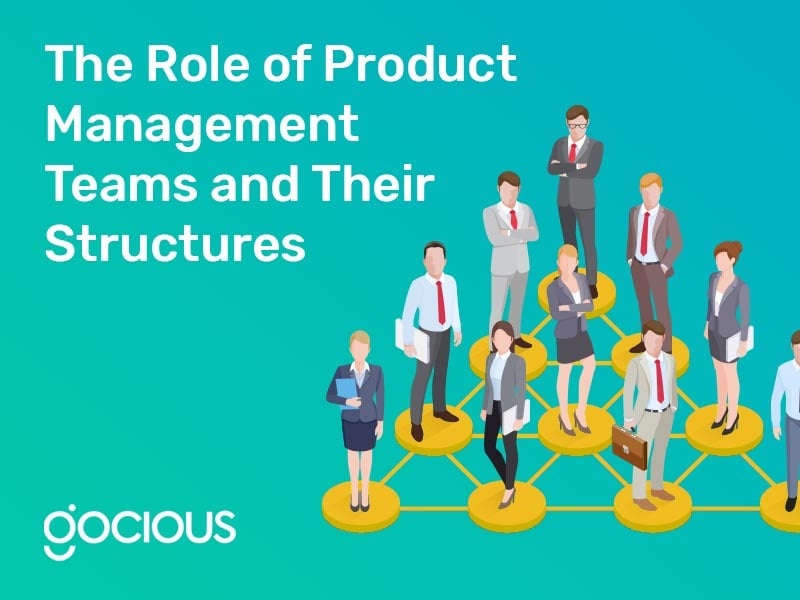
Subscribe to our blog
Ready to improve your roadmapping process?
Curious about how Gocious can help your manufacturing team transform its Product Lifecycle Management strategy? Let’s schedule a call to explore!
Product Management Articles
Maziar Adl

Recent Posts
Why it Pays to Track Customer Feedback in the Product Roadmap
Ideas for new products or product improvements come from a variety of sources. Sometimes, they result from a stroke of genius, while other times, it’s the reaction to market changes or competition changes. Other inspiration for product improvements comes directly from the customer. When the end-user of your product tells you how they would like to see the product improved or enhanced, and you follow through to deliver on that feedback, you’ll have an advantage at keeping loyal customers and growing your market share.
Physical Product Development 101: How to Design, Develop, and Manage Successful Products
Designing physical products is a thrilling experience, from sharing the initial concept with your team to watching the product take shape during manufacturing and finally having a positive impact on the customer's everyday life. Making physical products is also a lengthy and detailed process. Product managers must collaborate with market experts, engineers, designers, manufacturers, and many more stakeholders to see the product successfully through the launch. Physical product creation relies on experts, materials, technology, and artistry to come to life. Here’s what you should know about physical product development.
How Does Product Roadmap Oversight Benefit Executives?
As the leaders of a company, executives share the same vision and goals that their teams do. However, executives are more concerned with the long-term strategy of the company than the day-to-day work. Without constantly checking in with their employees, it can be difficult for them to know the status of projects.
How to Use Your Product Roadmaps to Combat Market Saturation
Combatting market saturation requires strategic planning and innovation to differentiate your product and capture new market segments. Innovation helps keep your products relevant and competitive against other companies in your industry, while strategic planning and market research can open up new doors. These are just two strategies among many more that can help your company avoid market saturation before it has a major impact on your portfolio.
5 Ways to Keep Your Product Roadmaps Flexible Yet Focused
Traditionally, your product managers have spent large portions of their workweek checking in with each product team and their progress. They've struggled to update spreadsheets, create presentations, and share only the latest versions with you, the executive.
How Product Roadmapping Tools Make PLE More Effective & Efficient
Increasing efficiency within your organization's product development process does not come in a one-size-fits-all solution. Each industry has unique challenges to launching the next best product. The product development approach best suited to your organization will depend on the size of your company, the complexity of your product lines, and your mindset for success.
How the WSJF Formula Gives Your Product Teams Clarity
Leading product executives know that building great products is both an art and a science. Even if they don't directly participate in the product development process, most product executives are well acquainted with the challenges of managing a portfolio of products. While creativity and outside-the-box thinking are encouraged, prioritization frameworks are also necessary for consistency and alignment.
Why Your Teams Should Build a Minimum Viable Product (MVP)
The manufacturing world is experiencing transformation, with an increasing number of companies adopting agile manufacturing practices. Adopting an agile framework requires a shift from creating fully-fledged prototypes for a specific stage of extensive testing to developing and continuously testing minimum-viable products (MVPs) instead.
Three Agile Metrics to Track and Measure: Outcomes, Flow & Competency
Every organization needs to decide which metrics they will track and measure. These metrics are indicators of your company's internal health, the performance of your products on the market, and the efficiency of your processes. Without tracking, measuring, and analyzing these figures, there is no definitive way to show success, find improvement opportunities, or learn from mistakes.
Does Set-Based Design Lead to Better Products?
Every product development team wants to create the best product possible. It’s easy to generate and collect great ideas. Still, it’s more challenging to explore the best options, let alone decide on the winning version that will please the customer and be commercially viable. Scoring methods can help sift through a long list of ideas, but how does the product team choose which ones to develop? One strategy that product management teams can use is Set-Based Design (SBD).
7 Ways to Deliver Value During a Product Critique Workshop
It takes a lot more than sheer luck to create a product that flies off the shelf or the lot. There is an extensive team of developers, engineers, designers, marketers, and managers behind that product. Delivering a great concept from the idea phase to successful sales requires coordination, collaboration, thorough testing, and refining. Product critiques play an integral part in the testing and refining process. Gathering a range of feedback before the final version launches leads to greater product success.
The Role of Product Management Teams and Their Structures
Your product management team is the backbone of your product development activities, whether you manufacture physical goods, produce hardware, or develop software. The members of your product management teams are essential for keeping everyone collaborating effectively to create great products.













